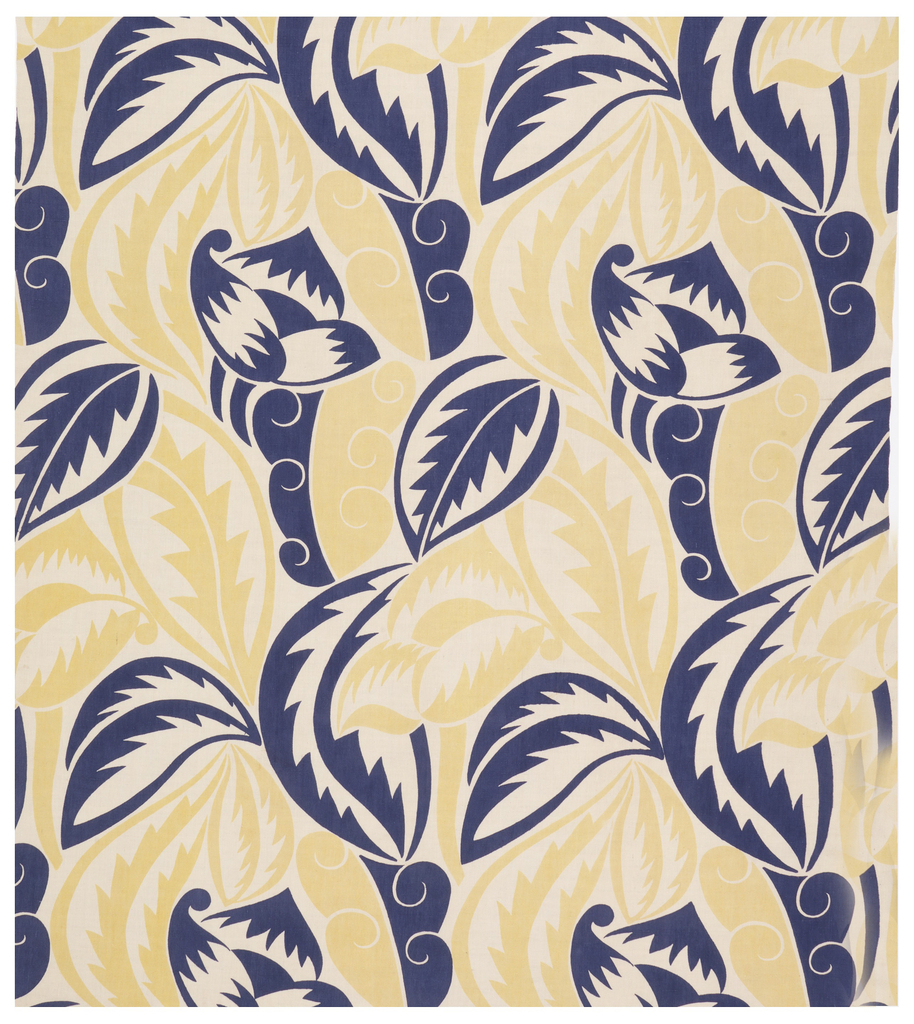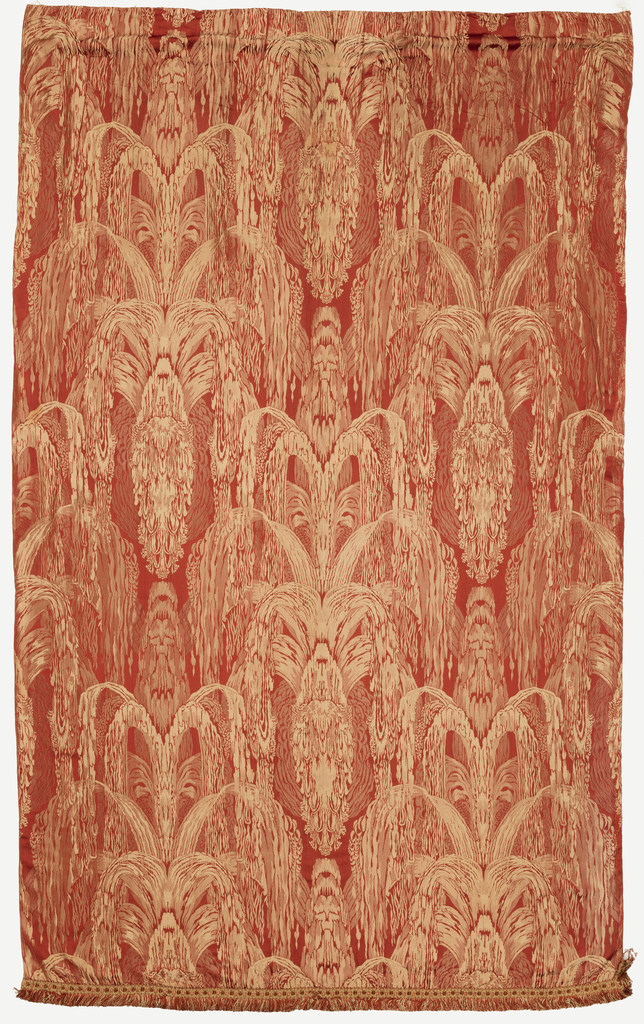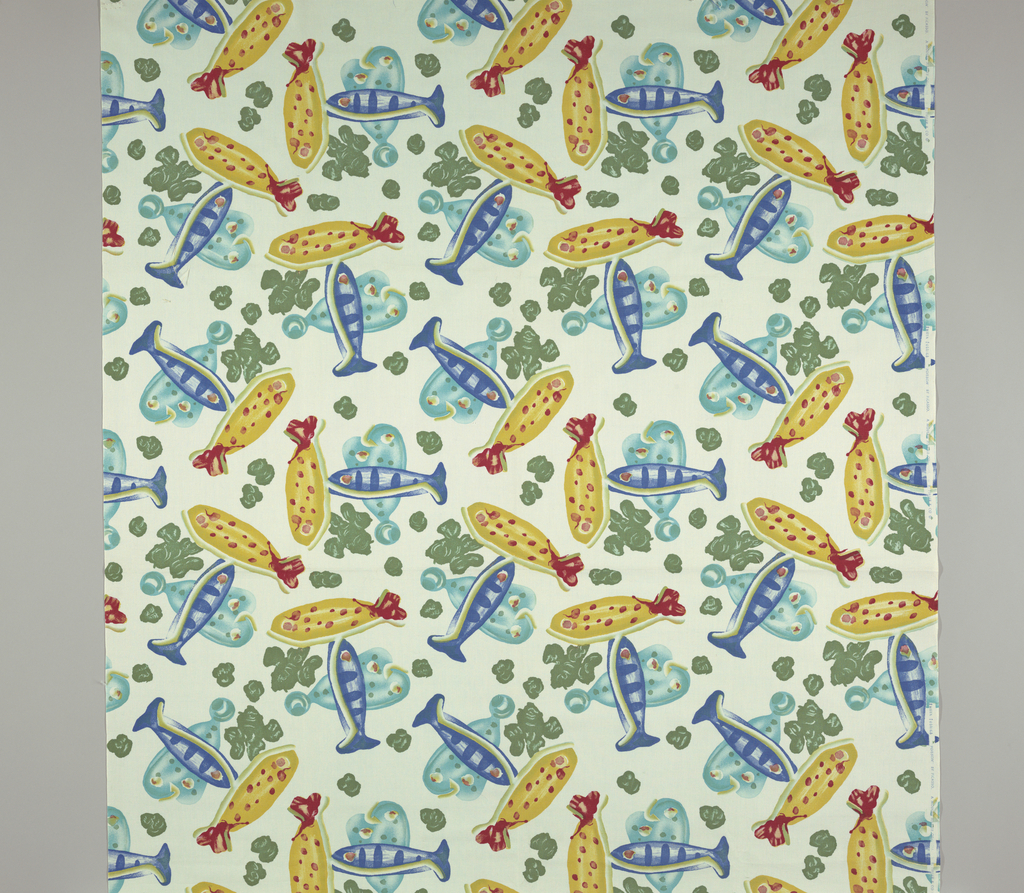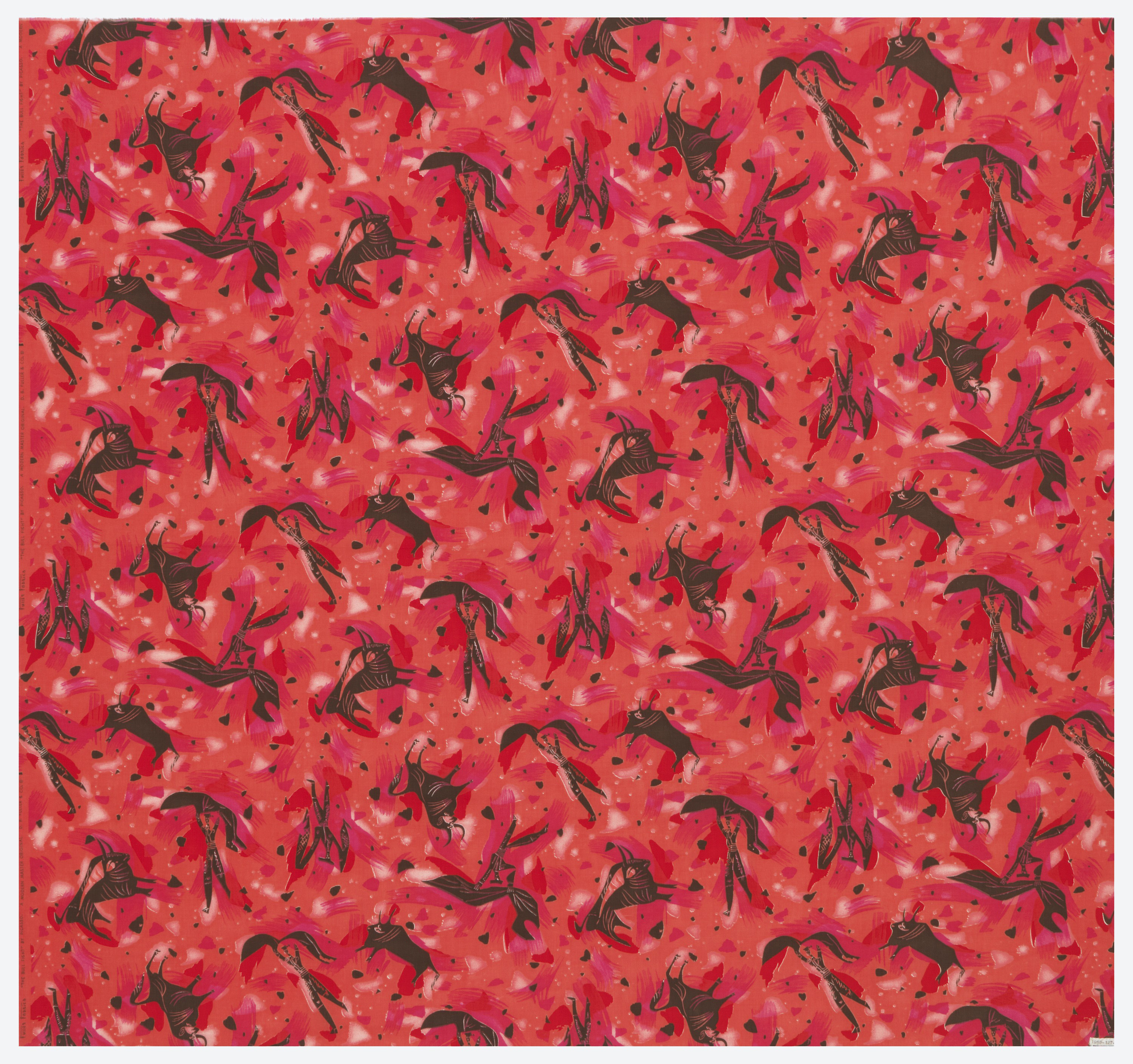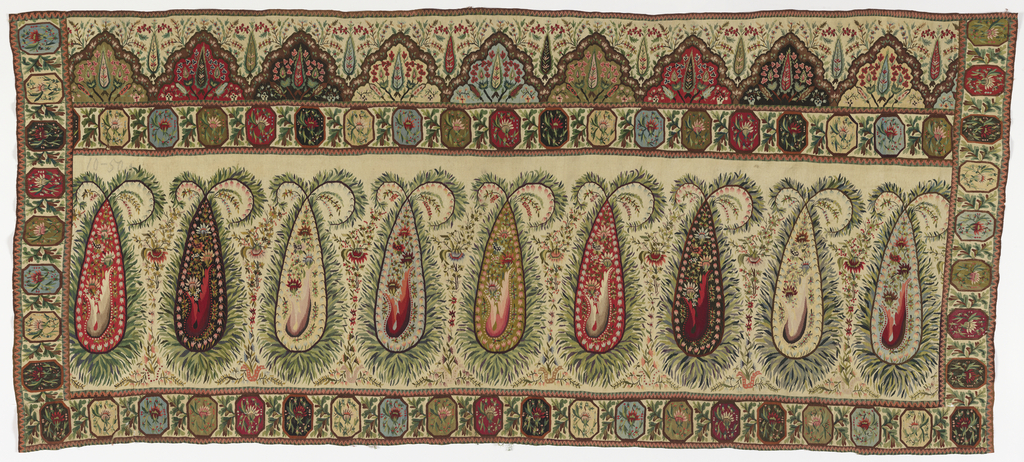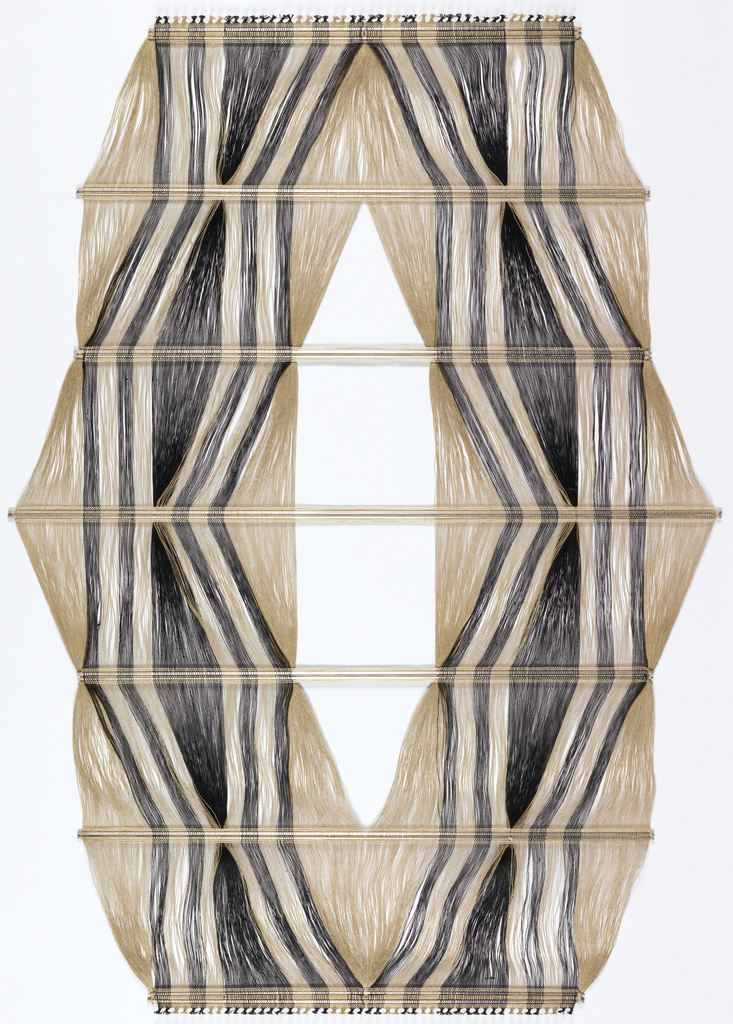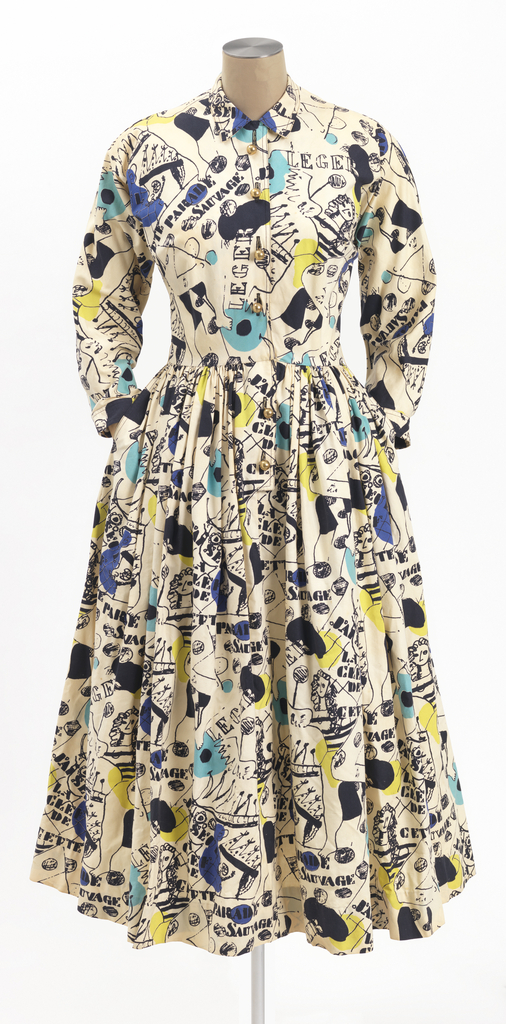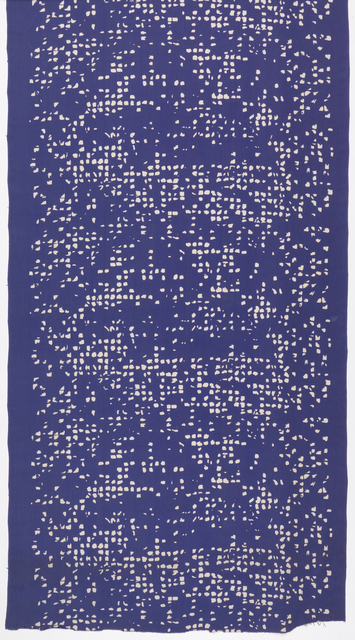Now on view in The Jazz Age: American Style in the 1920s, this Dufy textile proclaims modernity in its abstracted pattern.
This fashionable textile's fountain motif can now be seen in The Jazz Age: American Style in the 1920s.
In 1953, Dan Fuller, president of Fuller Fabrics, invited five of the 20th century’s most distinguished artists: Pablo Picasso, Fernand Léger, Marc Chagall, Joan Miró, and Raoul Dufy, to collaborate on a line of textiles to be called the Modern Master Series. The concept was unique in that the artists were not commissioned to produce...
Jack Lenor Larsen (b.1927) is one of America’s most prolific and innovative twentieth century textile designers. He came to prominence in the 1950s with his distinctive hand-woven casement fabrics for the commercial contract market. But he was not surprised to later become best known for his sumptuous printed fabrics like Primavera. For Larsen, it was...
In 1953, Dan Fuller, president of Fuller Fabrics, invited five of the twentieth century’s most distinguished artists—Pablo Picasso, Fernand Léger, Marc Chagall, Joan Miró, and Raoul Dufy—to collaborate on a line of textiles to be called the Modern Master Series. The concept was unique in that the artists were not commissioned to produce original patterns...
This distinctive, fully reversible shawl border was handwoven in Russia in the early nineteenth century to be part of a Kashmir-style shawl. It was woven such that the intricate floral design is identical on both sides of the fabric. Kashmir shawls were essential fashion accessories for stylish women of means in nineteenth-century Europe. Initially imported...
Peter Collingwood was trained as a doctor but abandoned medicine for a distinguished career as a weaver. He studied weaving in the early 1950s with Ethel Mariat, Barbara Sawyer, and Alastair Morton, all preeminent British weavers of the time, before setting up his own studio. Collingwood was consumed by his interest in textile structures, fascinated...
This shirtwaist day dress was designed by celebrated fashion designer Claire McCardell, who is noted for her important contribution to “The American Look” of casual and active sportswear for women. It was made from a printed cotton fabric, Parade Sauvage, designed by Fernand Léger, one of the most prominent, prolific, and influential modern artists of...
The design industry in the US flourished in the decade following World War II. In textiles, small designer-led entrepreneurial firms drove the creative awakening, with an emphasis on innovative printed textiles that took their cues from modern art and architecture. Large established textile producers remained on the sidelines, wedded to the traditional brocades and satins...
